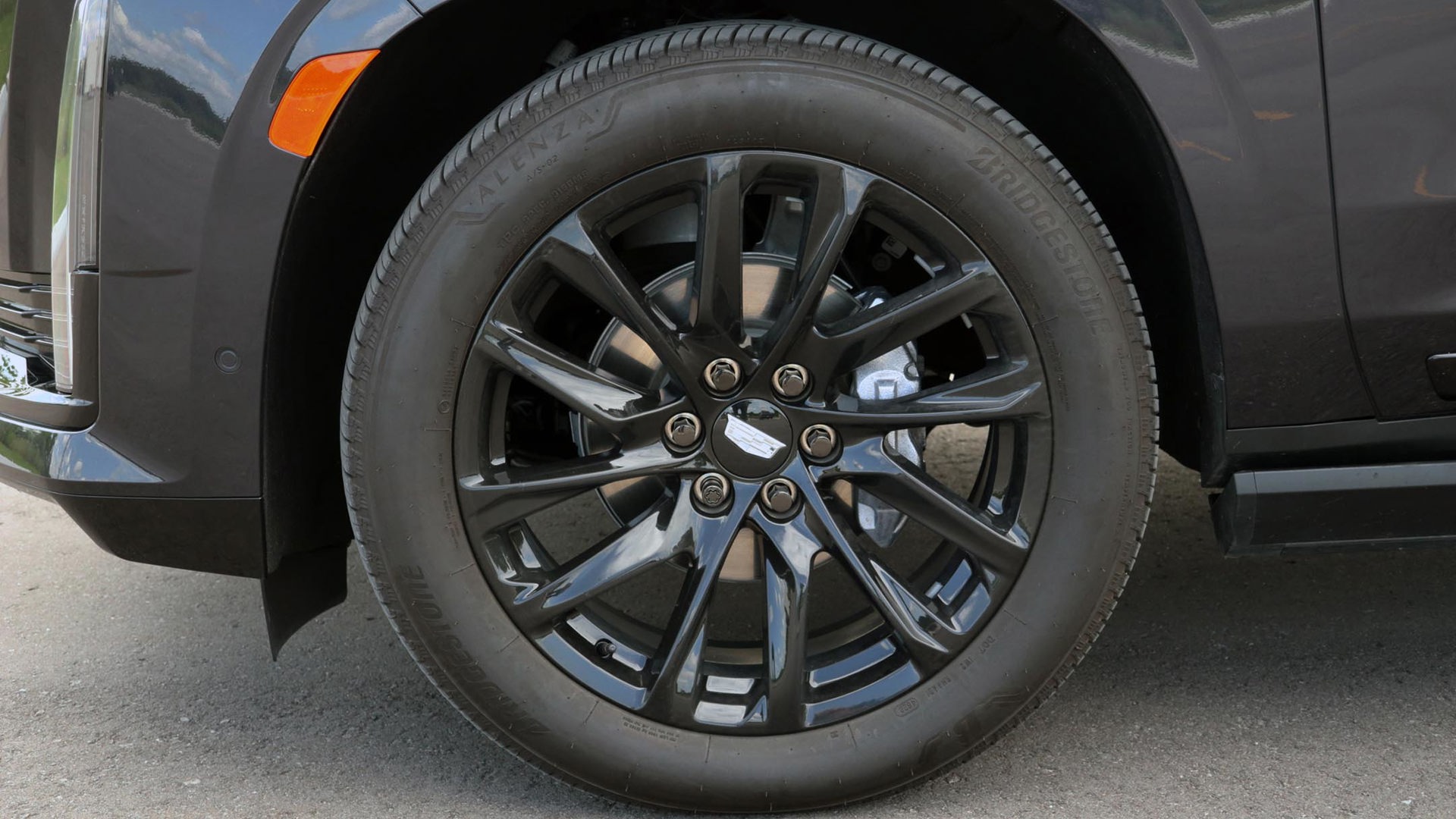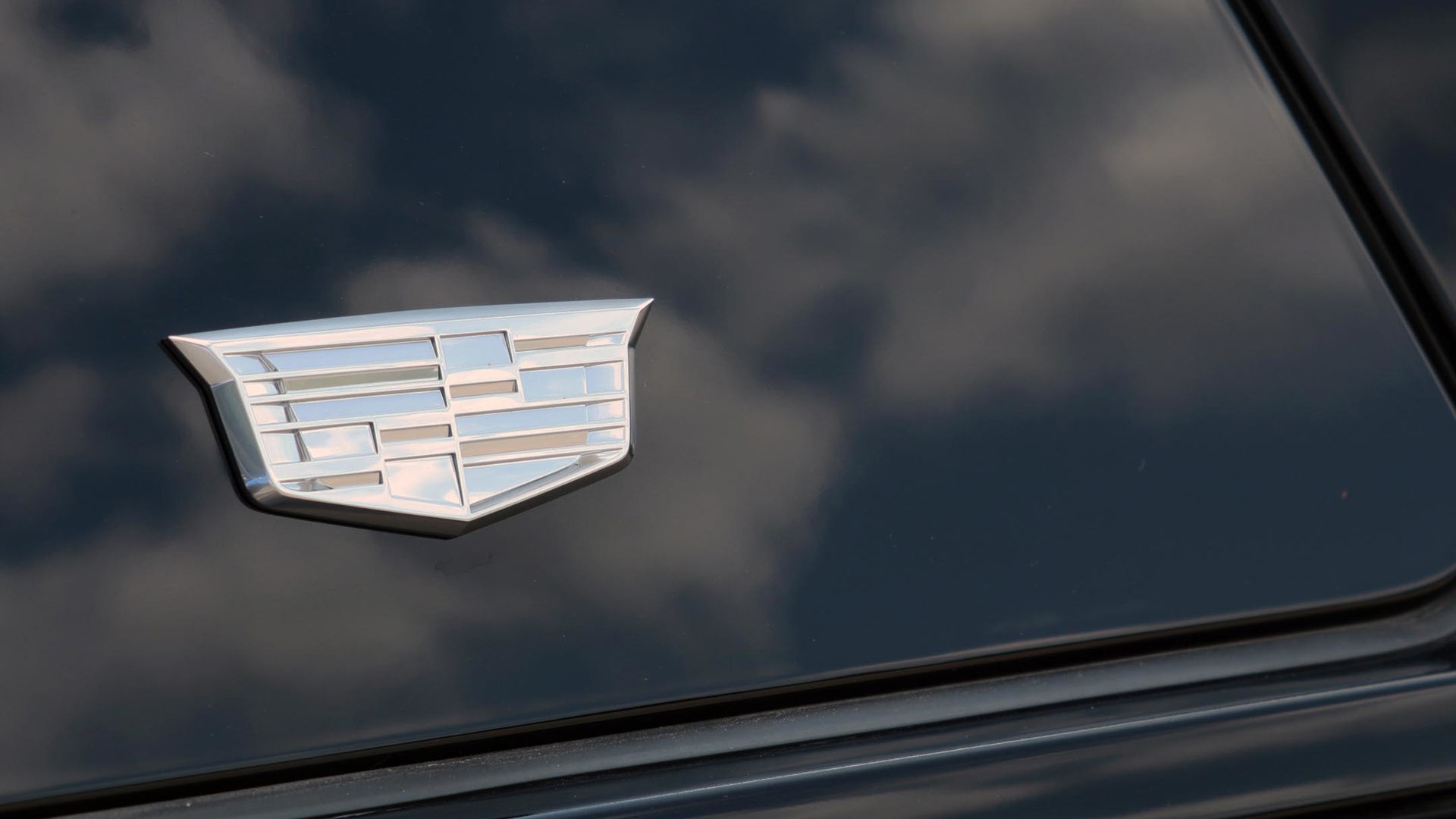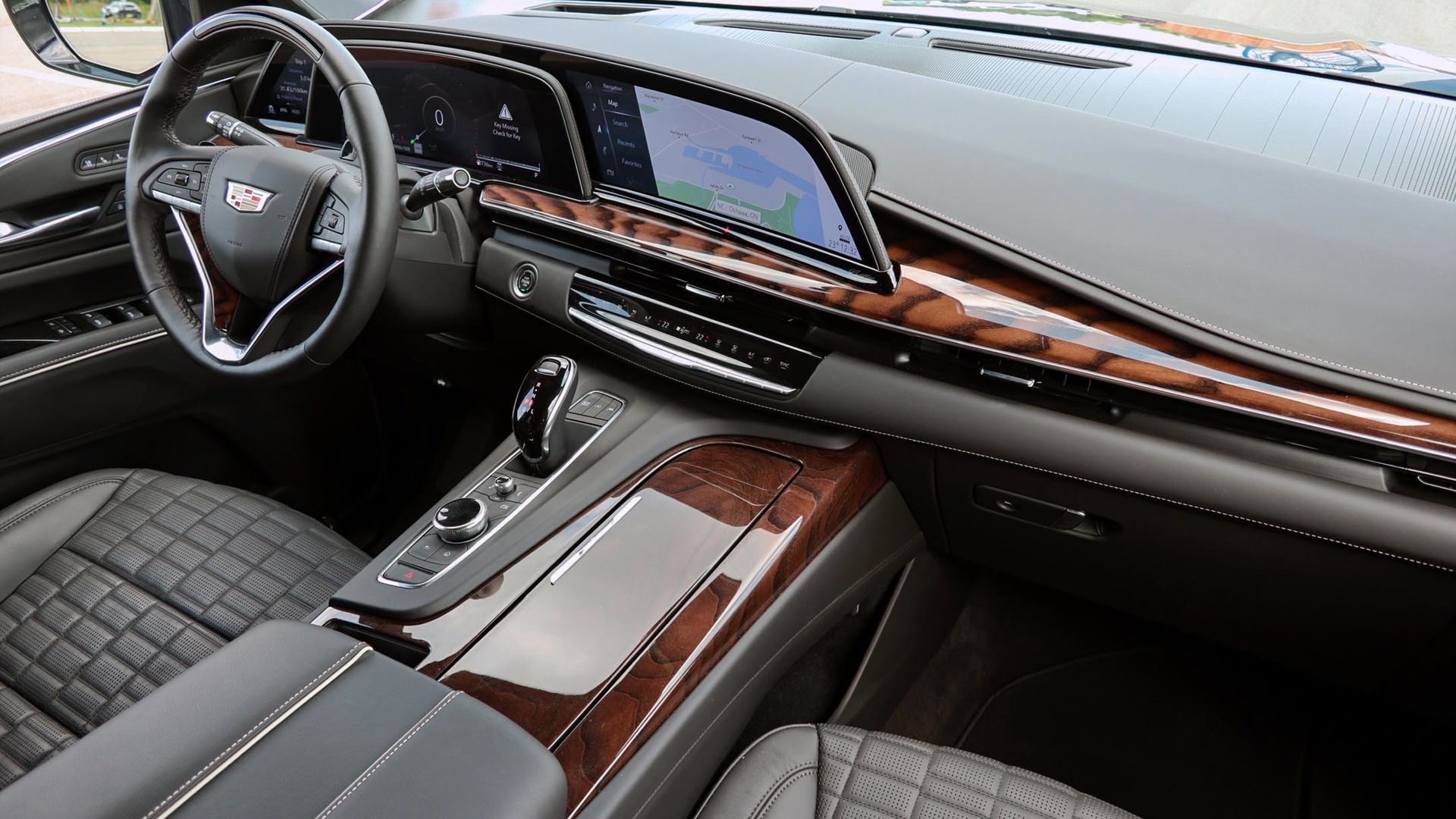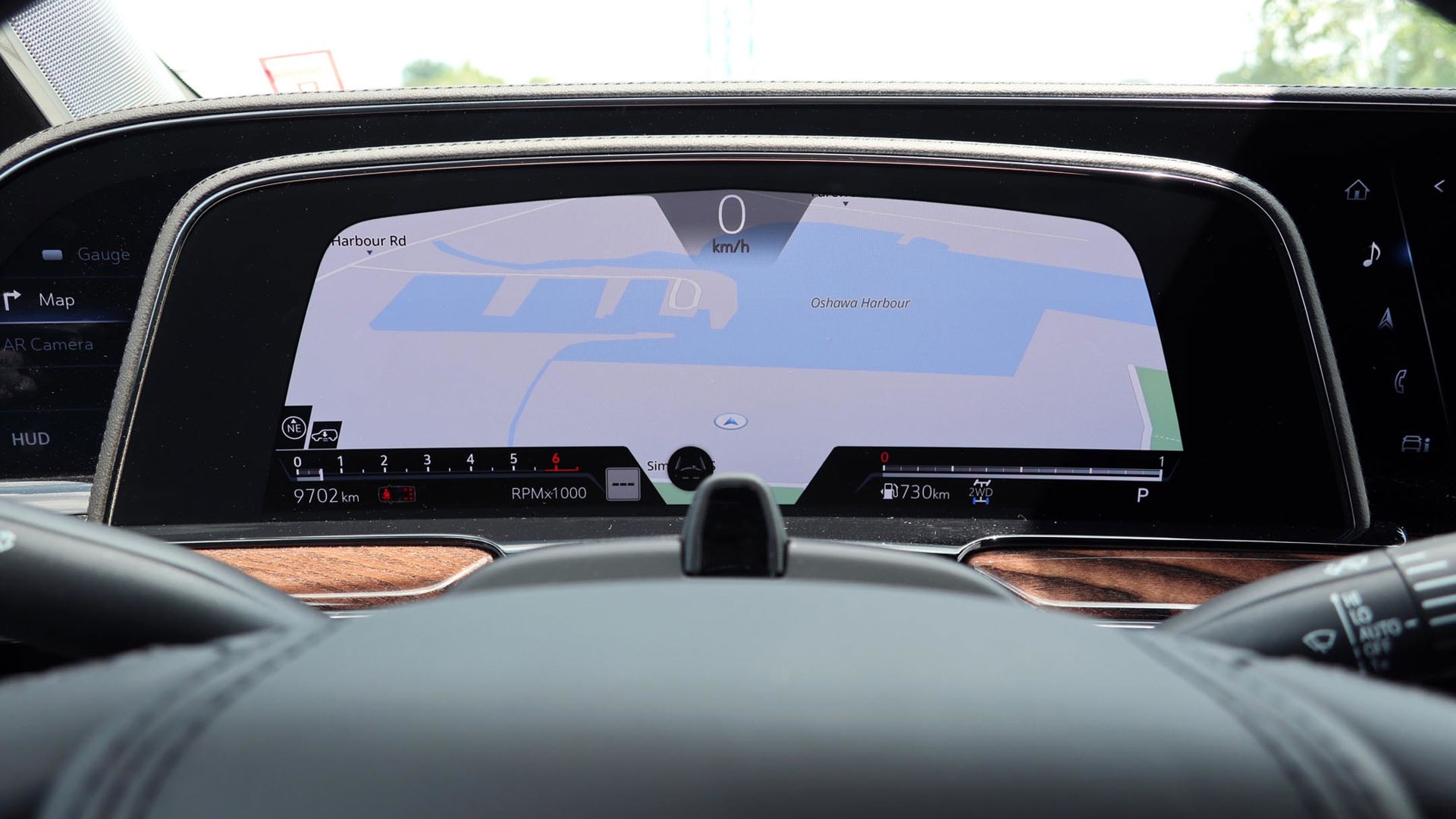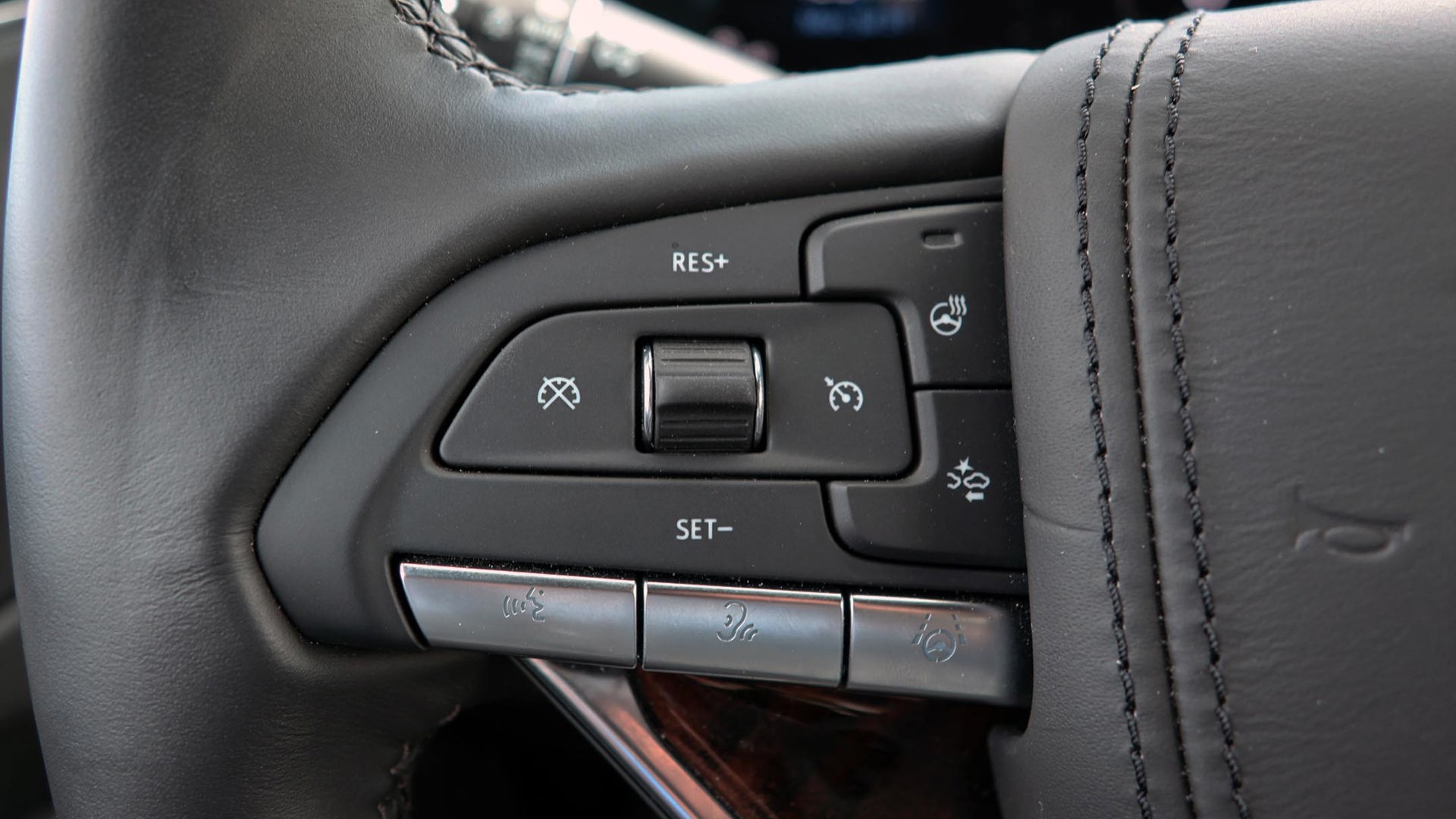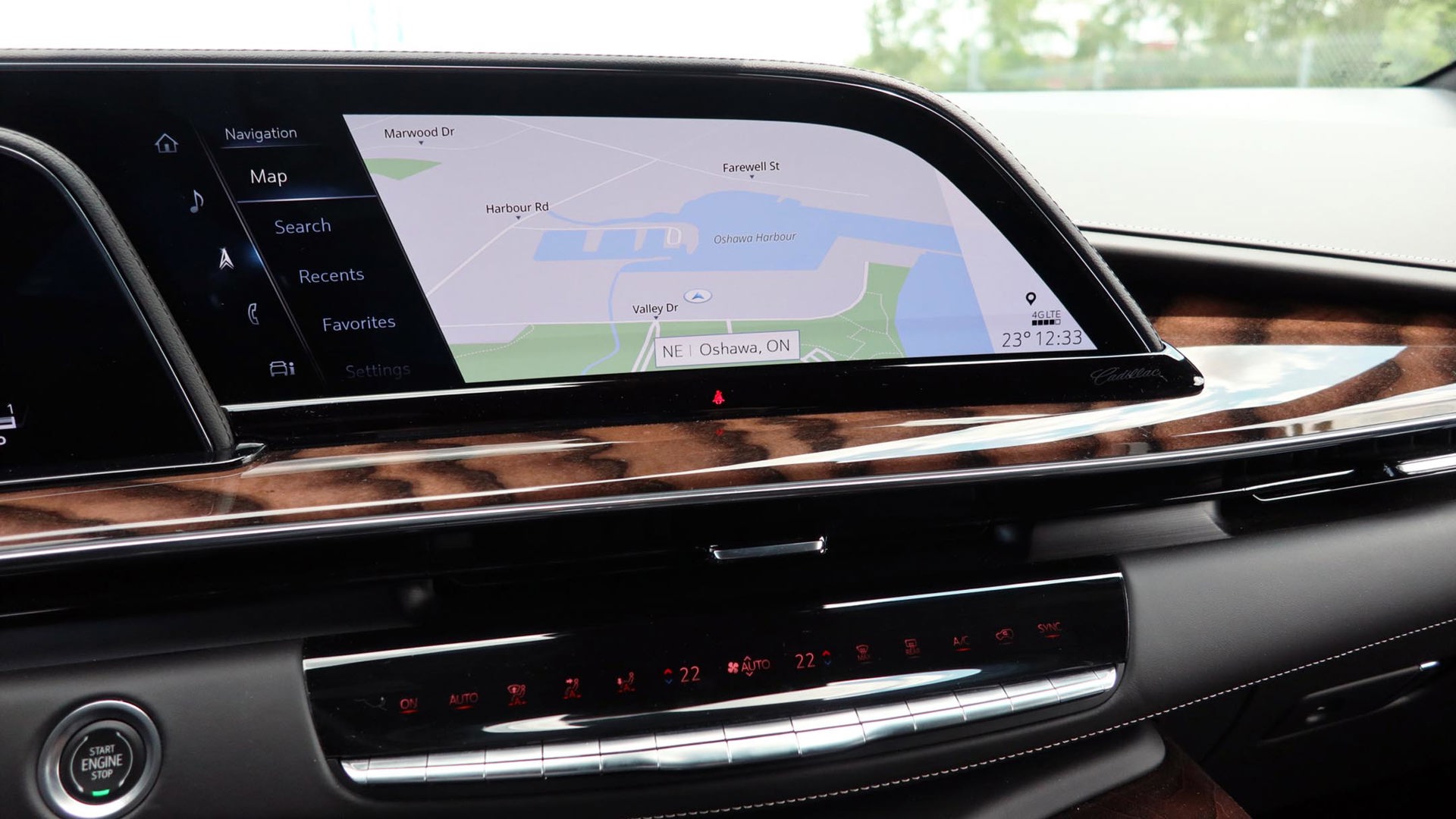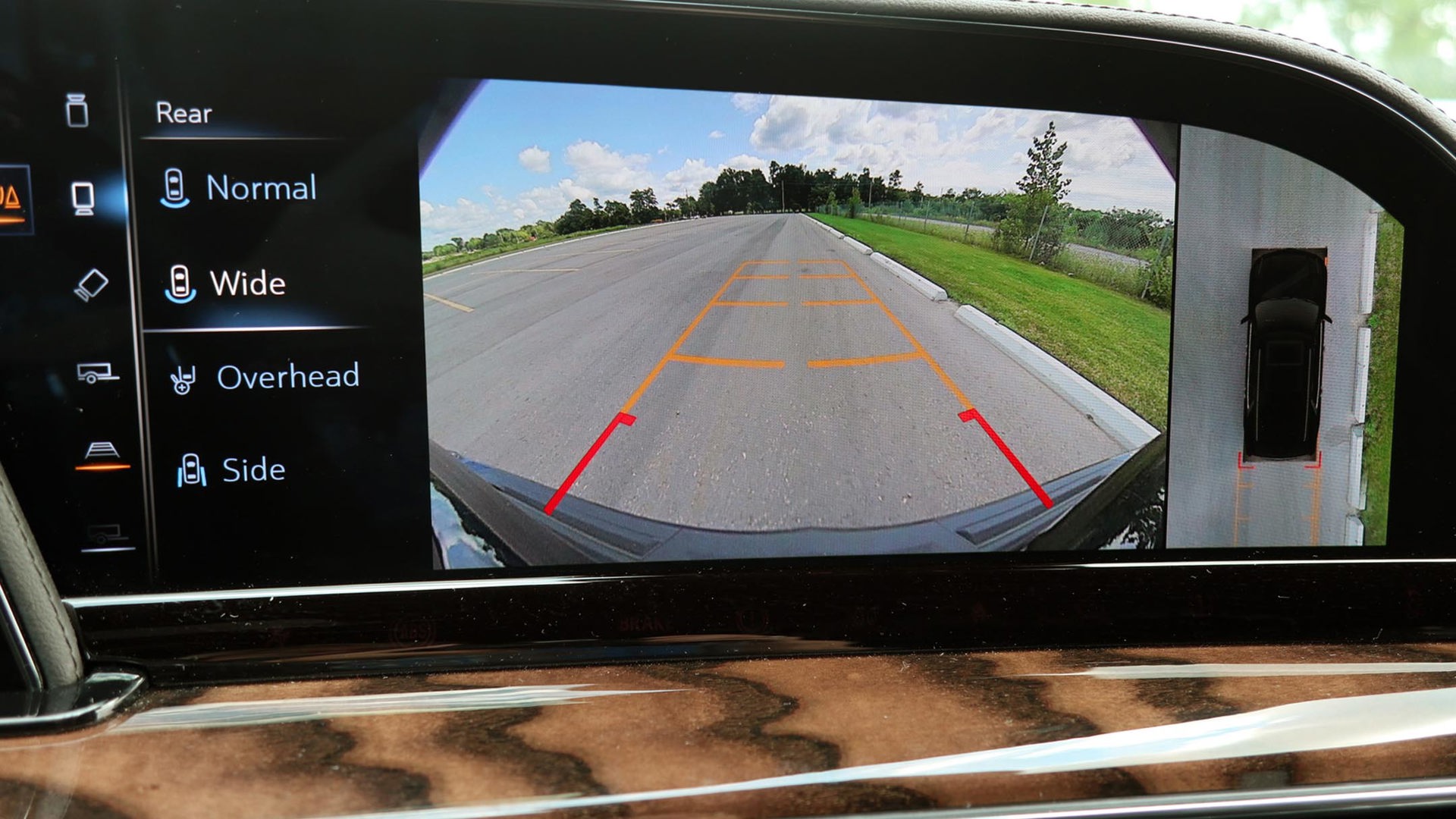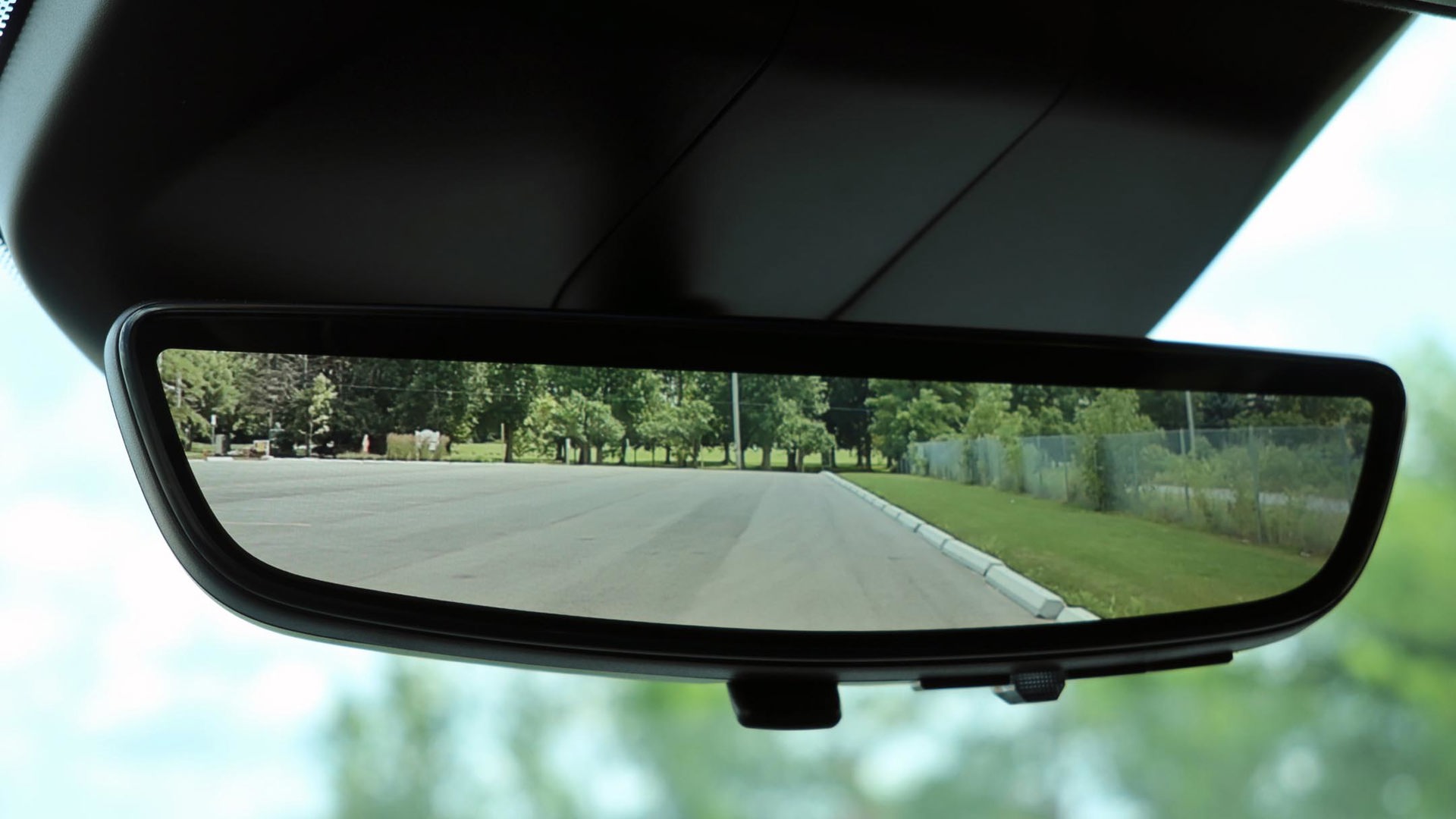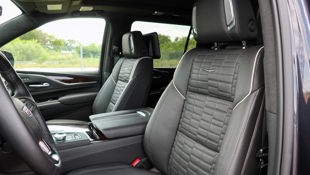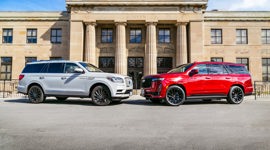 AutoTrader SCORE
AutoTrader SCORE
-
STYLING8/10
-
Safety8/10
-
PRACTICALITY9/10
-
USER-FRIENDLINESS9/10
-
FEATURES9/10
-
POWER8/10
-
COMFORT8/10
-
DRIVING FEEL8/10
-
FUEL ECONOMY7/10
-
VALUE7/10
An iconic nameplate, the 2023 Cadillac Escalade continues the tradition as the luxury brand’s largest offering that dates back to its 1999 introduction.
Soon it’ll even go electric as the 2025 Escalade IQ. The regular Escalade remains unchanged for 2023 save for some new exterior colours; while an all-new, 682-hp Escalade-V version debuts this year.
The Escalade comes in two lengths, the one tested here being the longer ESV version. The extra length provides more third-row legroom and cargo space, and adds $3,500 over the shorter Escalade in each trim. My seven-passenger Sport Platinum ESV tester started at $146,598, including a non-negotiable delivery fee of $2,300. Mine was further treated to options that took it to $157,658 before taxes.
Styling: 8/10
The Escalade is a box, but a well-proportioned and handsome one. The Sport has dark trim; if you prefer more chrome, opt for the similarly-priced Luxury. My tester further had an Onyx package, at $4,415, which added 22-inch gloss-black wheels, monochrome Cadillac crests, gloss-black badge, and puddle lights with the crest.
The dash is highlighted with dual curved screens, which incorporate a 16.9-inch infotainment display, 14.2-inch digital instrument cluster, and 7.2-inch left-side screen for controlling the head-up display and other features.
Safety: 8/10
The 2023 Cadillac Escalade ESV earns four out of five stars in crash testing by the United States National Highway Traffic Safety Administration (NHTSA). It has not been rated by the Insurance Institute for Highway Safety (IIHS), which is common with large premium SUVs.
Standard driver-assist features include emergency front and rear braking, adaptive cruise control, a self-parking system, bird’s-eye camera views, blind-spot monitoring including trailer coverage, rear cross-traffic alert, lane-keep assist, and a safety alert seat, which vibrates a warning if any of these systems detect an issue, such as you’re drifting out of your lane.
My tester was also equipped with Super Cruise, a hands-free highway driving assist system. It works on pre-mapped highways, covering about 644,000 km across Canada and the U.S. When you’re on an applicable one, an icon appears in the cluster, and you can activate the system and then take your hands off the wheel, although you still need to pay attention.
The Escalade will change lanes if you activate the turn signal, but you can also set it for automatic, where it will move out on its own to pass slower traffic and then return to the lane it was in. The system generally worked well during testing, but sometimes wandered side-to-side within its lane; and in a couple of places where construction had subtly altered the lanes many months before, the Escalade drifted out over the line. That caused it to immediately shut off Super Cruise and make me take the wheel.
Features: 9/10
As expected in this expensive top trim, the Escalade Sport Platinum comes stuffed to the gills. Its standard features include soft-close doors, wireless Apple CarPlay and Android Auto, 3-D surround sound with speakers in the front head restraints and headliner, a rear-seat entertainment system with twin 12.6-inch screens, massaging front seats, a power-adjustable heated steering wheel, head-up display, tri-zone automatic climate control, suede-style headliner, rearview camera mirror, panoramic power sunroof, power running boards with LED lighting, auto-levelling headlights, and a hands-free tailgate. The standard navigation includes augmented reality, where you can bring up a live forward camera view in the cluster, and the directions will overlay it.
User-Friendliness: 9/10
The Escalade’s functions are easy to use, with simple and intuitive menus and icons in the centre screen, which can be used with touch or a console-mounted joystick. Climate functions are handled with toggle switches, and there are buttons for the drive modes and air suspension height.
The power running boards help with getting into this tall SUV. The doors open wide, and the second-row seats tumble forward a considerable distance for easy access to the third row.
Practicality: 9/10
While the regular and extended-length Escalades have the same first- and second-row legroom, the ESV provides more for those in the third row, at 930 mm (36.6 in) versus 886 mm (34.9 in). Its cargo space is also considerably larger, at 1,175 L with the third row upright compared to 722 L in the regular Escalade. This is why the ESV is the airport-livery vehicle of choice: if you fill it with people, you still have room for their luggage. The rear glass opens separately from the tailgate for tossing items in, and there’s a bin under the cargo floor.
Both the second- and third rows power-fold, and the rearmost row can be brought back upright under power, too. Fold them all and you get 2,438 mm (95.9 in) of cargo length – the equivalent of the long box bolted to the back of a pickup truck. Towing capacity with the gasoline engine is 3,538 kg (7,800 lb). Among extended three row rivals, its GMC Yukon XL sibling can tow marginally more at up to 3,583 kg (7,900 lb), while the Lincoln Navigator L is rated at 3,674 kg (8,100 lb), and the Jeep Grand Wagoneer L goes to 4,286 kg (9,450 lb).
Comfort: 8/10
The 2023 Cadillac Escalade ESV is as comfortable as you’d expect, with its massaging seats and considerable leg- and headroom, including in the third row. The Sport Platinum includes an adjustable air ride suspension for a very smooth ride, while the quiet cabin adds to the feeling of being coddled.
Power: 8/10
The Escalade comes with a choice of two engines, starting with my tester’s 6.2L V8 making 420 hp and 460 lb-ft of torque. The option is a 3.0L inline six-cylinder diesel that makes 277 hp and 460 lb-ft of torque – the same torque as the gas engine, but it peaks much sooner. Both engines use a 10-speed automatic transmission.
The gas-powered V8 is a very good fit to this big vehicle, moving with authority from stops or when passing on the highway, but remaining smooth and linear when you just want to move moderately through tighter traffic.
Driving Feel: 8/10
The Escalade’s steering is smooth and responsive, and when manoeuvring at slower speeds it can feel a bit smaller than it actually is – at least, until you’re trying to squeeze it into a parking spot. At higher speeds, there’s the expected body roll around corners, although it never feels tippy. Its natural habitat is the highway, where it effortlessly eats up the kilometres in comfort. The brakes stop it smoothly and accurately. Magnetic ride control is standard on the Sport Platinum, which almost instantly softens or stiffens the shock absorbers depending on road conditions.
All Escalade trims have four-wheel drive. It includes two-wheel drive; while the four-wheel high should only be used on loose surfaces, such as gravel or deep snow, as driving it on hard pavement can cause it to bind. The automatic setting gives you four-wheel but can be driven on all surfaces, and is the best choice for slippery roads.
Fuel Economy: 7/10
The Escalade ESV with the gas engine is rated by Natural Resources Canada (NRCan) at 16.6 L/100 km in the city, 13.1 on the highway, and 15.0 in combined driving. I drove my tester unloaded and mostly on the highway, and surprisingly came in under the highway number at 12.8 L/100 km. It calls for premium fuel.
The Jeep Grand Wagoneer L meets the Escalade at 15.0 L/100 km in combined driving, but the Lincoln Navigator L undercuts them both by a considerable margin at 10.5 L/100 km.
Value: 7/10
The Escalade ESV’s price is as large as its footprint, starting at $113,098 in Luxury trim and going to $146,598 for either the Premium Luxury Platinum or my Sport Platinum tester – and then to $199,398 for the new supercharged V version.
This extended-length full-size is a small niche segment, and the Cadillac’s base prices are the priciest. The Jeep Grand Wagoneer L starts around $109,995 and goes to $131,500; while the Lincoln Navigator L comes in a single trim at $120,000, and optioned close to my tester rings in at $128,450 (all prices including delivery). A step down from the Escalade, its mechanical-sibling GMC Yukon XL tops out with the Denali Ultimate trim at $124,803.
The Verdict
The 2023 Cadillac Escalade ESV attracts a very specific shopper, but if you’re the type who needs to carry a lot of people and their cargo in coddling comfort, this will do the job. Cross-shop it with the Navigator and Grand Wagoneer; and if the badge and top features aren’t a priority, be sure to look at the Chevrolet Suburban and GMC Yukon as well.
| Engine Displacement | 6.2L |
|---|---|
| Engine Cylinders | V8 |
| Peak Horsepower | 420 hp @ 5,600 rpm |
| Peak Torque | 460 lb-ft @ 4,100 rpm |
| Fuel Economy | 16.6 / 13.1 / 15.0 L/100 km cty/hwy/cmb |
| Cargo Space | 1,175 / 2,665 / 4,044 L behind 3rd/2nd/1st row |
| Model Tested | 2023 Cadillac Escalade ESV Sport Platinum |
| Base Price | $144,298 |
| A/C Tax | $100 |
| Destination Fee | $2,300 |
| Price as Tested | $157,758 |
|
Optional Equipment
$11,060 – Galactic Grey Metallic paint, $900; Onyx appearance package, $4,415; Super Cruise, $2,875; Cat-back performance exhaust, $2,870
|
|














